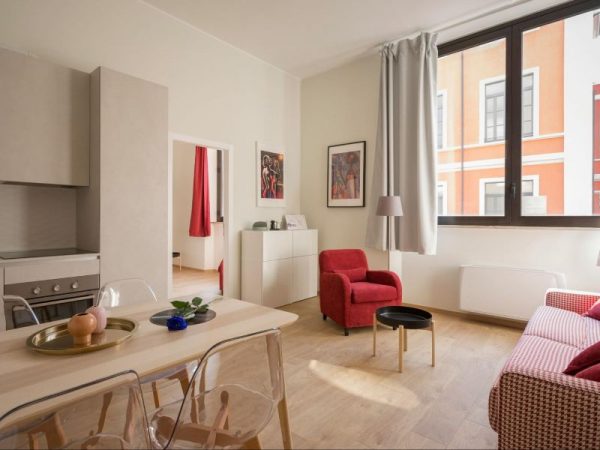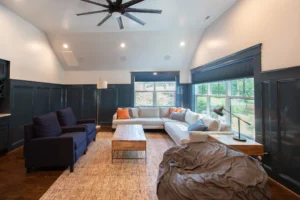Interior painting is one of the most effective ways to transform the look and feel of a space. The colors you choose can influence mood, create visual interest, and reflect your style. However, with countless paint colors available, selecting the right hues can be overwhelming. In this comprehensive color guide for interior painting, we will explore key factors to consider when choosing paint colors, popular color trends, and tips for achieving harmonious color schemes that enhance your home’s aesthetic appeal.
Understanding Color Psychology
Before diving into specific paint colors, it’s essential to understand the basics of color psychology. According to our friends at CertaPro Painters, different colors evoke different emotional responses and can impact the atmosphere of a room. For example:
- Red: Energizing and stimulating, red is often associated with passion and excitement. It can be an excellent choice for accent walls or areas where you want to create a focal point.
- Blue: Calming and serene, blue is known for its ability to promote relaxation and tranquility. Lighter shades of blue can make a room feel airy and spacious, while darker shades add depth and sophistication.
- Yellow: Cheerful and optimistic, yellow is often used to brighten up spaces and evoke feelings of happiness and warmth. It’s ideal for kitchens, dining rooms, or other areas where you want to create a welcoming atmosphere.
- Green: Refreshing and rejuvenating, green is associated with nature and symbolizes growth and harmony. It’s a versatile color that works well in any room, especially in bedrooms and living areas.
- Neutral Colors: Neutral colors such as white, gray, and beige are timeless and versatile choices that provide a neutral backdrop for furniture and decor. They can also help small spaces feel larger and more open.
Consider the Room’s Function and Lighting
When choosing paint colors for interior spaces, consider the function of the room and how lighting conditions may affect color perception. For example:
- Living Room: Opt for warm and inviting colors such as earthy tones, soft neutrals, or muted pastels to create a cozy atmosphere conducive to relaxation and socializing.
- Kitchen: Choose bright and cheerful colors like yellow, green, or light blue to energize the space and inspire creativity. Consider using semi-gloss or high-gloss paint finishes for easy cleaning and durability.
- Bedroom: Select calming and soothing colors such as soft blues, lavender, or pale greens to promote restful sleep and relaxation. Avoid using overly stimulating colors that may interfere with sleep quality.
- Home Office: Opt for colors that enhance focus and productivity, such as shades of blue or green with gray undertones. Consider incorporating pops of color or accent walls to add visual interest without overwhelming the space.
Test Paint Samples
Before committing to a paint color, it’s essential to test paint samples in the actual space to see how they look in different lighting conditions throughout the day. Paint small swatches directly on the walls and observe how they appear in natural light, artificial light, and at night. Consider how the color interacts with other elements in the room, such as furniture, flooring, and decor.
Explore Color Trends
Keep abreast of current color trends and palettes to find inspiration for your interior painting project. While timeless neutrals like white and gray never go out of style, incorporating trendy colors can add a contemporary touch to your home. Some popular color trends for interior painting include:
- Nature-inspired Hues: Colors inspired by nature, such as earthy greens, warm browns, and organic neutrals, are increasingly popular for their calming and grounding effects.
- Soft Pastels: Soft pastel shades like blush pink, baby blue, and pale lavender are popular choices for creating a light and airy feel in interior spaces, particularly in bedrooms and nurseries.
- Bold Accents: Adding pops of bold, saturated colors like emerald green, cobalt blue, or mustard yellow can inject personality and drama into a room without overwhelming the space.
Create Harmonious Color Schemes
When selecting paint colors for your home, aim to create harmonious color schemes that flow seamlessly from room to room. Consider the following strategies:
- Monochromatic Scheme: Use varying shades of the same color family to create a cohesive and sophisticated look throughout the home.
- Analogous Scheme: Choose colors that are adjacent to each other on the color wheel, such as blue and green or orange and yellow, to create a harmonious and cohesive color palette.
- Complementary Scheme: Pair colors that are opposite each other on the color wheel, such as blue and orange or purple and yellow, to create dynamic contrast and visual interest.
- Neutral Base with Accents: Start with a neutral base color for walls and furniture and add pops of color through accent pieces such as throw pillows, artwork, and accessories.
Don’t Forget About Trim and Ceilings
When planning your interior painting project, don’t overlook the importance of trim and ceiling colors. While white is a classic choice for trim and ceilings, consider using complementary or contrasting colors to add visual interest and architectural detail. For example, painting trim in a slightly lighter or darker shade than the wall color can create depth and dimension while painting ceilings in a soft, complementary hue can visually expand the space.
Conclusion
Choosing the right paint colors for interior spaces is a crucial step in creating a cohesive and inviting home environment. By considering factors such as color psychology, room function, lighting, and current trends, you can select paint colors that reflect your style and enhance the mood and atmosphere of each room. Remember to test paint samples, explore color schemes, and pay attention to trim and ceiling colors to achieve a harmonious and visually stunning result. With careful planning and consideration, you can transform your home with a fresh coat of paint that leaves a lasting impression.

























